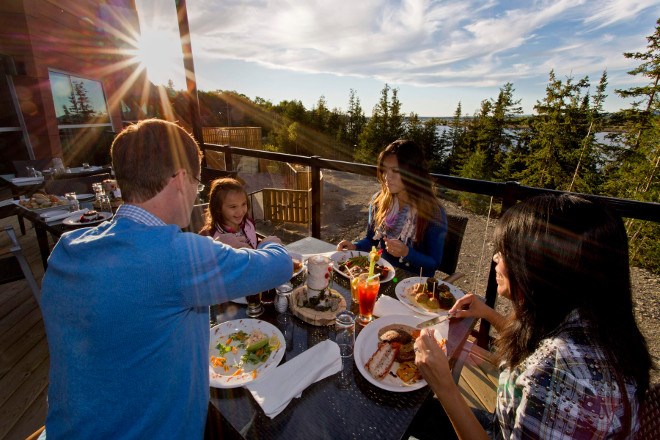As travelling foodies eat up culinary experiences across Canada, Indigenous Tourism Ontario (ITO) is working on a strategy to ensure Northern Ontario businesses have the recipe for success.
“There's a real hunger here for Indigenous food tourism,” explained Kevin Eshkawkogan, CEO of ITO.
“Food is a great way to tell that story in a way that everyone is comfortable.”
Eshkawkogan’s first taste of food tourism happened organically in his previous role as CEO of the Great Spirit Circle Trail (GSCT) on Manitoulin Island. It was around 2006, and they were looking for new ways to engage travellers.
“We asked ourselves, ‘What did our ancestors do, what did our grandparents do when hosting people?’” explained Eshkawkogan.
They landed on food and started serving cedar tea (a staple in the region) and a modern version of bannock (a traditional Indigenous flatbread) cooked over a fire with locally produced berries and maple syrup to dip it in.
What they called the “bannock and berries” experience became one of their most popular offerings.
The strategy – produced by ITO in partnership with Destination Northern Ontario, the Ontario Culinary Tourism Alliance, and the Indigenous Tourism Association of Canada – is looking to build on experiences like the GSCT’s, and outlines the current environment and opportunities for growth.
It points out that the Indigenous tourism sector in Canada grew by 23.2 per cent between 2014 and 2017, outpacing the tourism industry as a whole by nearly nine per cent.
They found one third of visitors to Canada say they’re looking for Indigenous tourism experiences. While the demand is nationwide, Ontario leads the way, holding over half of all the jobs in Indigenous tourism and boasting a $622-million GDP.
Eshkawkogan said there are about 600 Indigenous tourism companies in the province, and over a quarter of all Indigenous tourism experiences happen in Northern Ontario.
Combined with what they’ve identified as a clear demand for specifically culinary experiences, the strategy concluded: “There is a strong case for enhancing existing experiences through the inclusion of food while supporting the development of new Indigenous food tourism businesses and experiences.”
For local businesses, the strategy is a welcome development.
“It’s an exciting time right now to be involved in the Indigenous tourism scene and food culture in general,” said Corey Stacinski, general manager of the Manitoulin Hotel and Conference Centre.
The hotel offers a range of locally supplied products including whitefish, bison, berries, and honey.
While these products are consistently popular – Stacinski said their bison chili has been a “surprisingly big seller” that they put on everything from fries to hot dogs – there can be barriers to getting them.
Sometimes, they have to order ingredients far in advance, and Stacinski said it can be difficult for suppliers to go through all the required steps to getting a product on someone’s plate.
Stacinski has been working with Eshkawkogan for several years now, and said he already sees benefits from the work ITO is doing for food tourism in the region.
“What Kevin and ITO have already done is connect the dots with some of the players to get these traditional ingredients we’d like to use,” said Stacinski.
“The biggest piece for us at the hotel is working through some of those barriers and making it easier to source some of the ingredients.”
In the coming months, Eshkawkogan said they’ll be putting the strategy into effect and looking for more ways to support businesses in the region develop their ideas.
Like, for example, Joanna Panamick, the tourism coordinator for the GSCT where Eshkawkogan once worked.
“I’m trying to develop different products now, something more traditional than bannock,” explained Panamick.
“I’ve been looking into popped wild rice, as a garnish or as a cereal. Food tourism could be fish at shore lunches, showing people how to smoke meat.... There really are no bounds.”
With a strategy in place, connecting with potential suppliers and partners could be easier for those like Panamick and Stacinski, who are looking to feature more Indigenous foods.
What they’re doing is popular, but they wish they could do more.
“We've identified the problem: there's not enough Indigenous food tourism in Northern Ontario. We want to create some structure for an environment for that to happen,” said Eshkawkogan.
“In five years, we want that Indigenous food tourism sector to be very prominent and to be at the forefront of all the other tourism in Ontario.
“It's about working collectively as an industry as a whole. Markets are demanding this.”
- Northern Ontario Business
